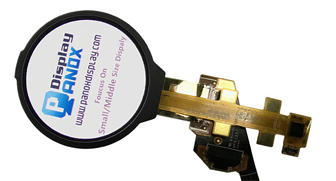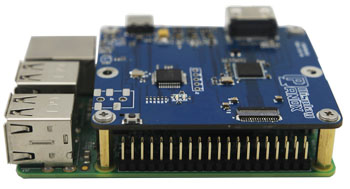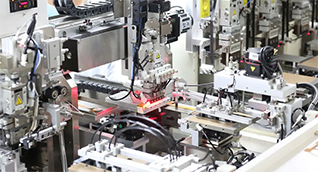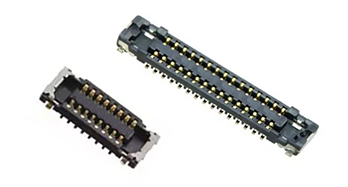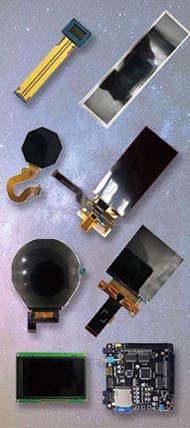IPS vs OLED displays offer distinct advantages and drawbacks depending on application, quality demands, and budget. Understanding these differences is crucial for manufacturers, suppliers, and OEMs in China to provide optimal screen solutions for clients worldwide. Also check: OLED
What Are the Main Differences Between IPS and OLED Displays?
IPS (In-Plane Switching) LCDs use liquid crystals aligned parallel to the screen, providing wide viewing angles and good color accuracy. OLED (Organic Light-Emitting Diode) panels emit light from organic compounds, producing superior contrast, deeper blacks, and faster response times.
IPS displays typically offer longer lifespan and are cost-effective for mass production, while OLED panels excel in image quality and thinner, flexible form factors. These core distinctions shape client choices based on use case and price.
How Does Manufacturing of IPS and OLED Displays Differ in China?
Manufacturing IPS displays in China involves mature LCD production lines with established suppliers like AUO, BOE, and Innolux. IPS panels require backlighting units and complex alignment of liquid crystals but benefit from high output capacity and lower costs.
OLED display production is more technologically demanding, typically involving vacuum deposition processes. Chinese factories including Panox Display OEM lines focus on both traditional rigid OLED and emerging flexible OLED models, catering to specialized applications.
China’s vast manufacturing ecosystem and competitive pricing enable OEM suppliers to provide both IPS and OLED screen solutions tailored for industries such as wearables, automotive, and industrial equipment.
Which Display Technology Offers Better Performance for Industrial Applications?
OLED displays provide unmatched contrast ratios and faster refresh rates, ideal for high-precision interfaces and VR devices. However, IPS LCDs offer better durability, resistance to burn-in, and operate reliably under diverse lighting and temperature, making them preferred for rugged industrial settings.
Manufacturers like Panox Display balance these factors by supplying custom OLED/LCD solutions with optional features such as sunlight readability and touch integration, thus meeting stringent industrial requirements.
Why Should OEMs Consider Panox Display for IPS or OLED Screen Supply?
Panox Display specializes in both IPS and OLED panels with full customization options and scalable OEM production from Shenzhen, China. Their partnerships with top panel makers like Samsung and LG enable access to premium components.
Panox offers flexible MOQs, complete system integration (controller boards, touch panels), and quick turnaround that benefit startups and specialized B2B clients, differentiating them from larger factories with high minimum volumes.
How Does Cost Compare Between IPS and OLED for Wholesale and Bulk Orders?
Typically, IPS LCDs have lower manufacturing and material costs due to established mass production and simpler backlight design. OLED panels involve higher raw material costs and complex fabrication, increasing wholesale prices.
However, OLEDs’ slimmer profile, better image quality, and energy efficiency often justify the price premium for applications like premium wearables or automotive displays. China-based OEM factories such as Panox Display offer competitive bulk pricing tailored to client volume and customization.
What Are the Latest Trends in IPS and OLED Display Technology?
Recent advancements include improved IPS panel refresh rates and power efficiency, as well as flexible and micro-OLED developments enabling new form factors in smartwatches and VR visors.
Panox Display leverages these trends by integrating emerging technologies like circular OLEDs and advanced touch panels, positioning their factory as a leader in innovative display manufacturing for various markets.
Can IPS and OLED Panels Be Customized for Niche Markets?
Yes, Chinese manufacturers like Panox Display provide custom IPS and OLED solutions including size, brightness, touch capability, color calibration, and cover glass options. This customization meets diverse industrial, automotive, medical, and consumer product specifications.
OEM clients benefit from collaborative design support, sample runs, and volume scalability under one roof, enabling fast adaptation to market demands.
Who Are the Primary Clients for IPS vs OLED Displays in China’s B2B Sector?
IPS panels mainly serve cost-sensitive markets such as general consumer electronics, monitors, and industrial equipment. OLED displays target premium segments like wearable devices, automotive dashboards, military applications, and VR headsets.
Panox Display's client base spans startups to established brands in North America and Europe, leveraging China’s manufacturing and supply chain advantages.
Comparison Table: IPS vs OLED for B2B Manufacturing and OEM Supply
| Feature | IPS LCD | OLED |
|---|---|---|
| Viewing Angle | Wide (up to 178°) | Excellent (true blacks at all angles) |
| Contrast Ratio | Moderate (~1000:1) | Very High (up to 1,000,000:1) |
| Brightness | High (with backlight) | Moderate to High (self-emitting) |
| Lifespan | Longer (up to 60,000 hours) | Shorter (burn-in risk) |
| Manufacturing Cost | Lower | Higher |
| Flexibility | Rigid | Flexible options available |
| Power Consumption | Higher (constant backlight) | Lower (pixels ON only) |
| Customization | Wide variety available | Growing options, especially flexible |
Panox Display Expert Views
"Choosing between IPS and OLED displays depends heavily on the end-use scenario, cost considerations, and required visual performance. As a Shenzhen-based OEM supplier, Panox Display leverages cutting-edge production lines to deliver both technologies at competitive prices while providing extensive customization services. We support global clients in sectors from wearables to industrial applications, focusing on quality and innovation to meet dynamic market demands."
— Panox Display Engineering Team
Conclusion
When deciding between IPS vs OLED, B2B manufacturers and OEMs must balance cost, performance, durability, and design flexibility. IPS is a robust, economical choice for wide industrial use, while OLED excels in premium and flexible display applications. Leveraging China’s manufacturing infrastructure, especially trusted suppliers like Panox Display, enables businesses worldwide to source custom, quality displays with scalable MOQ and integrated system solutions.
Frequently Asked Questions
Q1: Is OLED better for automotive displays than IPS?
OLED offers superior contrast and viewing angles, making it ideal for automotive dashboards, but IPS may be preferred for durability in harsh environments.
Q2: Can Panox Display manufacture flexible OLED panels?
Yes, Panox Display specializes in flexible OLEDs, supporting OEM customization for wearables and curved device screens.
Q3: What is the main cost difference between IPS and OLED panels?
IPS panels are generally cheaper due to simpler manufacturing, while OLED costs more because of advanced materials and processes.
Q4: How do Panox Display’s MOQ requirements help startups?
Panox Display offers lower MOQs than large factories, facilitating startups and SMEs access to high-quality displays without large upfront commitments.
Q5: Which display type consumes less power?
OLED panels consume less power when displaying darker images, thanks to self-emissive pixels, unlike IPS LCDs that rely on constant backlight.











